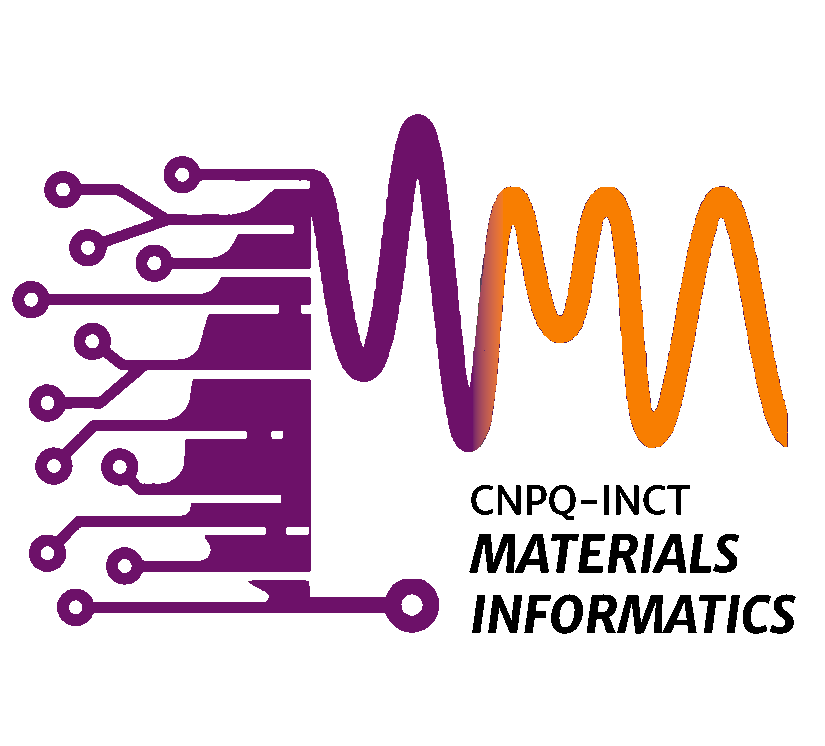Espinosa-García, W. F.; Dalpian, Gustavo M.; Osorio-Guillén, J. M. Intrinsic defects in sulvanite compounds: the case of transparent Cu3TaS4 and absorbing Cu3VSe4 Journal Article Em: Journal of Alloys and Compounds, pp. 172264, 2023, ISSN: 0925-8388. Resumo | Links | BibTeX | Tags: Defects, First-principles calculations, P-type materials, Semiconductors, Sulvanite Toriyama, Michael Y.; Qu, Jiaxing; Gomes, Lídia C.; Ertekin, Elif VTAnDeM: A python toolkit for simultaneously visualizing phase stability, defect energetics, and carrier concentrations of materials Journal Article Em: Computer Physics Communications, vol. 287, pp. 108691, 2023, ISSN: 0010-4655. Resumo | Links | BibTeX | Tags: Carrier concentration, Density functional theory, Point defects, Python, Semiconductors@article{ESPINOSAGARCIA2023172264,
title = {Intrinsic defects in sulvanite compounds: the case of transparent Cu3TaS4 and absorbing Cu3VSe4},
author = {W. F. Espinosa-García and Gustavo M. Dalpian and J. M. Osorio-Guillén},
url = {https://www.sciencedirect.com/science/article/pii/S0925838823035673},
doi = {https://doi.org/10.1016/j.jallcom.2023.172264},
issn = {0925-8388},
year = {2023},
date = {2023-09-25},
urldate = {2023-01-01},
journal = {Journal of Alloys and Compounds},
pages = {172264},
abstract = {Sulvanites are semiconducting compounds with the chemical formula Cu3TMX4 where TM = V, Nb, Ta; X = S, Se, Te. Semiconductor electronic and optical properties are highly influenced by intrinsic defects such as vacancies, antisites, and atoms residing in interstitial positions inside the crystal structure. Even though intrinsic defects are extremely important, very little is known about defects in sulvanites. Here we report the properties of all intrinsic defects in two representative sulvanite compounds (Cu3TaS4 and Cu3VSe4) by using computational quantum mechanical methods. Our results indicate that Cu vacancies are the most frequent defects in these compounds, also responsible for limiting the possibility of their n-type doping and setting the pinning of the Fermi energy to positions close to the valence band. These results explain why as-grown sulvanites are usually p-type and open a path for understanding the search for ways to design and tune the properties of these compounds.},
keywords = {Defects, First-principles calculations, P-type materials, Semiconductors, Sulvanite},
pubstate = {published},
tppubtype = {article}
}
@article{TORIYAMA2023108691,
title = {VTAnDeM: A python toolkit for simultaneously visualizing phase stability, defect energetics, and carrier concentrations of materials},
author = {Michael Y. Toriyama and Jiaxing Qu and Lídia C. Gomes and Elif Ertekin},
url = {https://www.sciencedirect.com/science/article/pii/S001046552300036X},
doi = {https://doi.org/10.1016/j.cpc.2023.108691},
issn = {0010-4655},
year = {2023},
date = {2023-01-01},
journal = {Computer Physics Communications},
volume = {287},
pages = {108691},
abstract = {Phase stability, defect formation energies, and carrier concentrations are closely interrelated features of semiconductors. Due to their joint dependence on the multidimensional chemical potential space, it is challenging to quantitatively establish patterns between these quantities in a given semiconductor, especially when the semiconductor is comprised of multiple elements. To enable synchronous visualization and analysis of these complementary material properties and their interdependence, we developed the Visualization Toolkit for Analyzing Defects in Materials (VTAnDeM). This python-based toolkit allows users to interactively explore how defect formation energies and carrier concentrations vary across the composition and chemical potential spaces of multicomponent semiconductors. Here, we illustrate the computational workflow that employs VTAnDeM as a post-processing tool for first-principles calculations and describe the data organization and theory underlying the visualization scheme. We believe that this software will serve as a useful tool for simultaneously visualizing the often complex and non-intuitive chemical potential – defect – carrier concentration phase space of semiconductors.
Program summary
Program Title: VTAnDeM – Visualization Toolkit for Analyzing Defects in Materials CPC Library link to program files: https://doi.org/10.17632/hz7dyc489v.1 Developer's repository link: https://github.com/ertekin-research-group/VTAnDeM Licensing provisions: MIT License Programming language: Python Nature of problem: Defect thermodynamics are often studied from the perspective of phase stability and defect formation energetics using first-principles calculations. The results are comparable to experimentally-measurable carrier concentrations. However, visualizing all properties simultaneously by exploring the multidimensional chemical phase space is not trivial. Solution method: VTAnDeM offers a graphical interface that allows the user to interact directly with the chemical phase space of a given material and to visualize the defect formation energetics and ensuing carrier concentrations. The computational methods derive from standard defect theory within the supercell approach. The synchronous visualization scheme provides a streamlined approach to analyzing defect-related properties in semiconductors and insulators, all in real time. Additional comments including restrictions and unusual features: Required packages, installation, and tutorials can be found on the Github page.},
keywords = {Carrier concentration, Density functional theory, Point defects, Python, Semiconductors},
pubstate = {published},
tppubtype = {article}
}
Program summary
Program Title: VTAnDeM – Visualization Toolkit for Analyzing Defects in Materials CPC Library link to program files: https://doi.org/10.17632/hz7dyc489v.1 Developer’s repository link: https://github.com/ertekin-research-group/VTAnDeM Licensing provisions: MIT License Programming language: Python Nature of problem: Defect thermodynamics are often studied from the perspective of phase stability and defect formation energetics using first-principles calculations. The results are comparable to experimentally-measurable carrier concentrations. However, visualizing all properties simultaneously by exploring the multidimensional chemical phase space is not trivial. Solution method: VTAnDeM offers a graphical interface that allows the user to interact directly with the chemical phase space of a given material and to visualize the defect formation energetics and ensuing carrier concentrations. The computational methods derive from standard defect theory within the supercell approach. The synchronous visualization scheme provides a streamlined approach to analyzing defect-related properties in semiconductors and insulators, all in real time. Additional comments including restrictions and unusual features: Required packages, installation, and tutorials can be found on the Github page.

